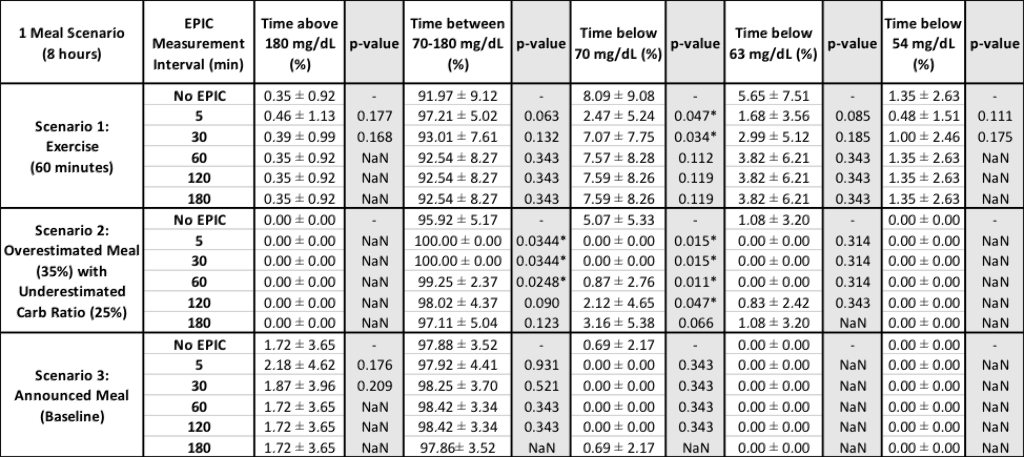Eyal Dassau, United States of America
Harvard University SEASModerator of 1 Session
Presenter of 5 Presentations
INVESTIGATING EFFECTS OF INSULIN ESTIMATION ON FUTURE INSULIN SENSORS’ DESIGN AND IMPLICATION FOR DIABETES MANAGEMENT
- Varuni Sarwal, United States of America
- Kelilah L. Wolkowicz, United States of America
- Sunil Deshpande, United States of America
- Joseph Wang, United States of America
- Jordan E. Pinsker, United States of America
- Lori Laffel, United States of America
- Mary-Elizabeth Patti, United States of America
- Francis Doyle III, United States of America
- Eyal Dassau, United States of America
Abstract
Background and Aims
Incorporation of an insulin sensor may help to improve performance of future AP algorithms by reducing severe hypoglycemic events. Optimal insulin measurement intervals were identified for a feedback-based threshold suspend safety-layer.
Methods
Personalized Kalman filter-estimated plasma insulin concentration (EPIC) measurements were used to supplement a zone model predictive control algorithm. Insulin delivery was suspended when both CGM was <140 mg/dL and EPIC values were greater than a personalized threshold based on fasting basal insulin concentrations. EPIC measurements occurred at 5-, 30-, 60-, 120-, and 180-minute intervals. Using the UVA/Padova Simulator, the controller was evaluated across ten in-silico subjects for three 8-hour, 50-gram carbohydrate scenarios: 1) sixty-minute exercise, induced via increasing glucose uptake rates, one hour after an announced meal, 2) meal size overestimation by 35% with carbohydrate ratio underestimated by 25%, and 3) announced meal (baseline).
Results
Implementing the EPIC safety-layer, the mean percent time below 70 mg/dL decreased: from 8.09±9.08% to 2.47±5.24% for 5-minute, 7.07±7.75% for 30-minute, 7.57±8.28% for 60-minute, and 7.59±8.26% for 120- through 180-minute intervals (scenario 1); from 5.07±5.33% to 0.00±0.00% for 5- through 30-minute, 0.87±2.76% for 60-minute, 2.12±4.65% for 120-minute, and 3.16±5.38% for 180-minute intervals (scenario 2); and from 0.69±2.17% to 0.00±0.00% for 30- through 120-minute, while remaining at 0.69±2.17% for 180-minute intervals (scenario 3). Infrequent measurements of 30- to 120- minutes resulted in slight performance degradation with increasing sample time.

*Indicates p-value<0.05
Conclusions
The EPIC safety-layer in-silico prevented severe hypoglycemia during challenging scenarios without significant rebound hyperglycemia. Future insulin sensors could potentially be designed utilizing 30- to 120-minute measurement intervals.
